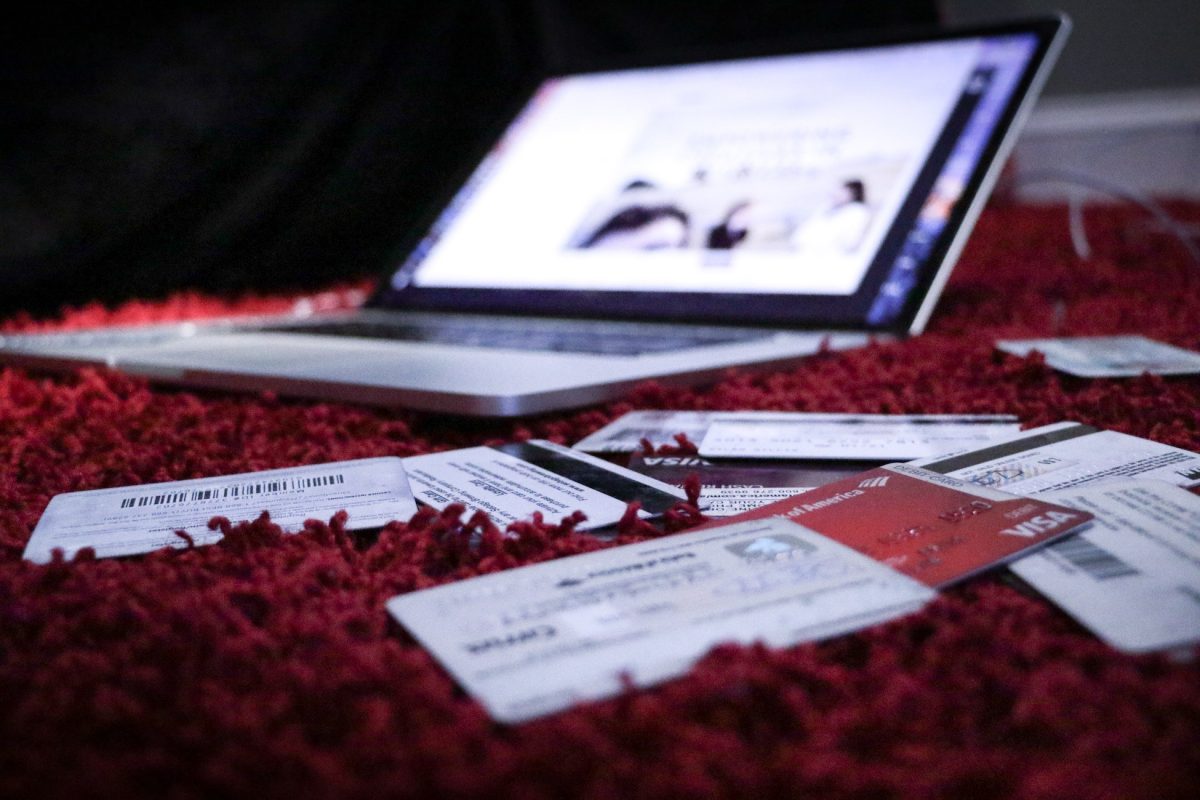Picture this: you’ve just discovered the secret financial power-up—applying for a personal loan—and suddenly it feels like you’re about to unlock a hidden level in your favorite video game. But wait… before you dive headfirst into the realm of interest rates, monthly payments, and small print that could rival your college textbook’s density, you need to know exactly what ingredients mix together to make a successful loan application. Let’s break it down in a way that’s as engaging as your favorite binge-worthy series and as practical as your budgeting app.
What Do I Need to Apply for a Personal Loan Table of Contents
What Is a Personal Loan and Why Might You Need One?
Understanding the Core Requirements for a Personal Loan Application
Your Checklist: Essential Documentation for Applying for a Personal Loan
The Role of Your Credit Score: Your Financial Report Card
Extra Tips and Tricks to Ace Your Personal Loan Application
Online Applications Versus Traditional Bank Applications: Which is Right for You?
Debunking Common Myths About Personal Loans
How to Choose the Best Personal Loan for Your Needs
Understanding the Fine Print: Interest Rates and Loan Terms
Using Technology: Tools and Apps to Streamline Your Application
Resources and Community Support: Your Next Steps
Your Journey to Financial Empowerment: Embrace the Process
Frequently Asked Questions About Applying for a Personal Loan
Empowering Your Financial Future One Smart Decision at a Time
What Is a Personal Loan and Why Might You Need One?
A personal loan is like that trusty sidekick in an epic adventure—you call on it when you need extra cash to help you tackle big expenses, from consolidating debt and paying for unexpected emergencies to funding a dream vacation or those inevitable home improvements. Think of it as financial fuel that propels you toward your goals. Unlike mortgages or auto loans that are tied down to specific purchases, personal loans tend to give you the flexibility to spend the money as you see fit, often without the collateral headaches.
For millennials and Gen Zers, who are all about living life on their own terms while keeping an eye on financial stability, a personal loan can be a practical tool in your financial arsenal. It gives you the money up front, and then you pay it back in fixed monthly installments over a set term, commonly ranging from two to seven years. If you play your cards right—like maintaining a good credit score and having steady income—this type of loan could be your ticket to achieving your financial objectives without draining your savings.
So, whether you’re funding a new business idea, paying off high-interest credit cards, or simply need a buffer to handle life’s unpredictable curveballs, knowing what you need to apply for a personal loan can set you on a path to financial empowerment. And hey, having a little extra cash can make life’s occasional pizza nights much more epic!
Understanding the Core Requirements for a Personal Loan Application
When the idea of applying for a personal loan first strikes, it can feel as if you’re staring at a recipe with a long list of ingredients—some you already have, and some that might require a quick dash to the financial store. But fret not! The process is often straightforward if you know what’s coming your way.
Generally speaking, there are three core elements most lenders scrutinize: your income, your credit history, and your overall financial stability. Lenders use these criteria to gauge your ability to repay the loan on time. In other words, you’re trying to convince them that you’re as reliable as that friend who never misses a brunch appointment.
Let’s break these down a bit:
- Income Verification: Whether it’s your steady paycheck from your full-time gig or income from side hustles, lenders will want to see that you have a consistent cash flow to cover monthly payments.
- Credit Score and History: Your credit score tells the lender how well you’ve managed debt in the past. A higher score can mean better interest rates and terms, whereas a low score might require additional documentation or even a co-signer.
- Financial Stability: This includes employment status, existing debt obligations, and sometimes even the length of time you’ve been at your current job. All these factors help establish that you can manage another monthly expense without breaking a sweat.
While the alarm bells might sound if you’re unfamiliar with the process, think of it as gathering your best achievements before a big interview. With the right documents and preparation, applying for a personal loan doesn’t have to be a nerve-wracking ordeal.
Your Checklist: Essential Documentation for Applying for a Personal Loan
Alright, time to roll up your sleeves and get organized—because having your documents ready is like having your game plan on lock. Missing a required document can delay your application, and in our fast-paced digital age, waiting is so not on trend.
Here’s a rundown of that all-important documentation checklist:
- Proof of Identity: Typically, a government-issued photo ID (passport, driver’s license, or national ID) is required to confirm who you are.
- Proof of Income: Pay stubs, tax returns, or bank statements that show your earnings are crucial. If you’re self-employed or a freelancer, you might need to provide additional documentation like profit and loss statements.
- Employment Verification: Some lenders may request a letter from your employer or recent pay slips to corroborate your job status. Consider it a brief performance review, but in financial terms.
- Credit History Reports: While the lender will conduct its own credit check, having a recent copy of your credit score and report can help you spot any discrepancies early on.
- Bank Statements: Usually for the last few months, these help demonstrate your money inflow and outflow, revealing your spending habits and financial discipline.
- Debt Information: Documentation of any existing loans, credit card balances, or other financial obligations you might currently have.
By having all your ducks in a row (or rather, your documents in a secure digital folder), you’re not only prepared for the lender’s due diligence but also positioning yourself as a savvy, organized borrower. And let’s be honest: a little organization goes a long way in boosting your financial karma.
The Role of Your Credit Score: Your Financial Report Card
If your credit score were a grade in school, you’d want nothing less than an A+ when you’re applying for a personal loan. Lenders use your credit score as a metric to assess how responsibly you’ve managed credit obligations in the past. Think of it as a little number that can either open financial doors for you or make you facepalm in the checkout line.
A higher credit score doesn’t just increase your chances of approval—it also helps ensure you’ll receive more favorable interest rates. On the flip side, if your credit score has seen better days, some lenders might still give you a chance, but at the cost of higher interest or stricter repayment terms. Not exactly what you’d call a win-win scenario!
Here are a few tips to help you keep your credit score in shape:
- Pay your bills on time. Consistent timeliness demonstrates reliability.
- Keep credit card balances low, as high utilization can drag your score down.
- Avoid opening multiple new lines of credit in a short span of time.
- Regularly check your credit report for errors or suspicious activity.
Remember, your credit score is not a static measure—it’s a dynamic reflection of your financial behavior. Whether you’re working to build your score from scratch or striving to maintain a long-established credit identity, being proactive about your credit health will make applying for a personal loan smoother and more rewarding.
Extra Tips and Tricks to Ace Your Personal Loan Application
Much like perfecting your high score in your favorite video game, there are little hacks and strategies to optimize your personal loan application process. Here are some insider tips to make sure you stand out in the financial crowd:
Know Your Loan Purpose
Even though personal loans are typically unsecured, lenders appreciate some clarity about how you plan to use the money. Whether it’s refinancing debt or funding a life-changing endeavor, outlining your purpose can streamline the process.
Shop Around and Compare Offers
Don’t settle for the first offer that pops up on your screen. With the internet at your fingertips, you can compare interest rates, terms, and fees from multiple lenders. Remember, a better rate can save you hundreds—or even thousands—over time.
Clean Up Your Financial Profile
Before the big plunge, take some time to tidy up your financial profile. This might involve paying off small outstanding debts, correcting any inaccuracies on your credit report, and bolstering your income documentation.
Consider a Co-signer if Necessary
If your credit isn’t stellar or your income seems a bit on the lower side, having a co-signer with a solid financial background can give lenders the extra reassurance they need. It’s like having a financial wingman who’s got your back.
Applying for a personal loan doesn’t have to be akin to navigating a labyrinth. With a clear plan and the right preparation, you can approach the process with confidence—and maybe even a bit of swagger.
Online Applications Versus Traditional Bank Applications: Which is Right for You?
In today’s digital age, the way you apply for a personal loan offers a choice that’s as liberating as choosing between streaming your favorite series on-demand or catching it on cable. There are two primary routes: online applications and traditional bank applications, and each has its own perks and quirks.
Online applications are the go-to for many tech-savvy millennials and Gen Zers due to their convenience and speed. With just a few clicks, you can fill out your information, upload your documents, and even receive approval decisions within minutes. No more waiting in line at a branch or getting tangled up in endless paperwork. Everything is streamlined and digital, making the process efficient and user-friendly.
On the other hand, traditional bank applications provide a more personal touch where you might have the opportunity to speak directly with a loan officer. This can be helpful if your financial situation is a bit more complex or if you simply prefer face-to-face interactions. The physical branch experience might help you feel more reassured about the process—even if it means a bit of a wait.
The choice between online and traditional methods ultimately boils down to your personal style: do you thrive with digital solutions and quick turnarounds, or do you value the personal connection that comes with in-person service? Either way, being informed about your options means you can make the best decision for your unique lifestyle and financial needs.
Debunking Common Myths About Personal Loans
There are plenty of misconceptions floating around about personal loans, and it’s time to set the record straight. Some myths can make the idea of borrowing money seem scarier than it really is, while others might make you overly optimistic. Let’s tackle a few of the most common ones.
Myth 1: Personal Loans Are Only for People Who Are in Debt
While it’s true that many people use personal loans for debt consolidation, they’re not exclusively a tool for drowning in debt. In reality, personal loans can be a smart financial strategy for funding education, home renovations, or even starting a business. When used wisely, they can help you manage your money more effectively.
Myth 2: You Need Perfect Credit to Qualify
Although having a high credit score improves your chances of getting a favorable rate, many lenders offer personal loans to individuals with less-than-perfect credit. The terms might not be as enticing, but with some extra effort to bolster your overall financial profile, you’re still in the game.
Myth 3: Personal Loans Always Come with Sky-High Interest Rates
Interest rates on personal loans vary widely depending on your creditworthiness, the amount you’re borrowing, and the lender’s policies. Shopping around and comparing offers can often reveal competitive rates that might be more appealing than you’d expect.
Busting these myths is all about approaching personal loans with a clear head and the right information. Not every rumor is gospel, and understanding the true nature of these financial tools can help you use them to your advantage without unnecessary fear or misunderstanding.
How to Choose the Best Personal Loan for Your Needs
Let’s be real: choosing the best personal loan is a bit like dating. You’ve got to weigh your options, figure out what fits your lifestyle, and come to a decision that feels right for both your heart and your wallet. There’s no one-size-fits-all answer, so here are some criteria to help you make that vital choice.
Interest Rates and Fees: The interest rate is one of the most important factors, as it affects your monthly payments and the total amount you’ll pay over the life of the loan. Look out for origination fees, prepayment penalties, or other hidden costs that could add up.
Loan Amount and Term: Consider how much money you actually need and how long you’ll be repaying the loan. A longer term might mean smaller monthly payments, but it could also mean paying more in interest over time.
Flexibility in Repayment: Check if the lender offers features like flexible payment dates or the option to skip a payment in case of emergency (just don’t make a habit of it!). Some lenders are more understanding than others when life throws a curveball.
Customer Service: If you ever need to discuss your loan terms or run into trouble, a lender’s customer service can be a lifesaver. Look for reviews or ratings that speak to the responsiveness and helpfulness of the lender.
By comparing these factors, you can narrow down your choices to find the loan that aligns with your needs. It’s about balancing short-term benefits with long-term financial health—think of it as a match made in fiscal heaven.
Understanding the Fine Print: Interest Rates and Loan Terms
When you’re reading through the details of a personal loan offer, don’t just skim the surface—dig into the fine print. Interest rates, repayment periods, and other small print details are critical to understanding the true cost of your loan.
Annual Percentage Rate (APR): The APR is not just the interest rate; it also includes fees and other costs associated with the loan, giving you a complete picture of what you’re paying. A seemingly low interest rate might be offset by high fees, so always compare the APR across offers.
Fixed vs. Variable Rates: Personal loans generally have fixed interest rates, meaning your monthly payments will remain the same throughout the term of the loan. Variable rates can change over time, which might work for some borrowers—for example, if you anticipate your financial situation improving—but can be risky if rates spike unexpectedly.
Repayment Terms: The length of the loan determines your monthly payment amount and overall interest paid. Shorter terms mean higher monthly payments but less total interest, while longer terms reduce the monthly burden but increase the overall cost. It’s all about finding the right balance for your budget.
Being well-versed in these details ensures you’re not caught off guard by unexpected costs down the line. It’s like reading the manual before assembling that flat-pack furniture—taking the time upfront saves you from future headaches!
Using Technology: Tools and Apps to Streamline Your Application
In this digital age, there are plenty of tools and apps available that can make your personal loan application process smoother than ever. Gone are the days of rummaging through piles of paperwork or trying to decipher financial jargon on your own.
Financial management apps can help organize your documents, track your monthly expenses, and even provide insights into your credit score. There are also dedicated loan calculators that give you an estimate of your monthly payment based on the loan amount, interest rate, and term. By playing with these digital tools, you can simulate different scenarios and choose the option that best fits your financial plan.
Moreover, many online lenders offer a fully digital application process that allows you to upload your documents, check your eligibility instantly, and even receive pre-approval letters—all from your smartphone or laptop. This level of convenience means you can apply for a loan from the comfort of your favorite coffee shop or even your own couch.
Embracing technology not only saves you time but also ensures that your application is accurate and complete, reducing the chances of delays. So, go ahead and explore the financial apps that help make your personal loan journey as seamless as possible.
Resources and Community Support: Your Next Steps
Now that you’re armed with the essentials of what you need, applying for a personal loan can feel less like deciphering ancient financial hieroglyphics and more like following a well-marked treasure map. But just because you have the map doesn’t mean you have to embark on this journey alone.
Consider joining financial communities on platforms like Reddit, Facebook groups, or even local meetups focused on financial empowerment. These communities can provide firsthand reviews of different lenders, share personal experiences, and offer support when you have questions or run into unexpected bumps in the road.
Additionally, many financial blogs and podcasts—popular among millennials and Gen Z—discuss personal finance topics, offering tips and reviews that can help guide your decision-making process. Seeking advice from trusted sources ensures you’re not only making an informed decision but also staying updated on any regulatory changes or new financial products that may come your way.
The goal is to leverage community wisdom and professional advice to make the best possible financial choices for yourself. Whether it’s through interactive online forums or one-on-one sessions with a financial advisor, remember that the journey to financial empowerment is a collaborative effort.
Your Journey to Financial Empowerment: Embrace the Process
Think of applying for a personal loan as more than just filling out an application—it’s the beginning of a journey toward financial empowerment. With the right amount of preparation, a clear understanding of what lenders expect, and a dash of digital savvy, you’re well-equipped to navigate this financial quest.
Each step, from gathering documentation and checking your credit score to comparing offers and using technology to your advantage, is a building block toward a stronger financial future. You’re not just borrowing money; you’re investing in your ability to achieve your goals, manage unexpected expenses without losing your cool, and ultimately create a stable financial foundation.
Life is unpredictable, and sometimes a personal loan can serve as the cushion that helps you bounce back from those unexpected events. By taking the time to educate yourself and prepare thoroughly, you empower yourself to make choices that align with your long-term goals.
So here’s to you and your journey toward financial empowerment—one smart, well-prepared step at a time. Embrace the process, celebrate your progress, and remember that each financial decision you make is a vote for the future you want to build.
Frequently Asked Questions About Applying for a Personal Loan
We’ve gathered some of the burning questions you might have about the process of applying for a personal loan, and answered them in clear, relatable terms. If you’re looking for quick answers to help demystify the process, this FAQ section is for you.
1. What are the basic requirements for applying for a personal loan?
Most lenders look for proof of identity, steady income, a good credit score, and financial stability. Having documents such as driver’s licenses, recent pay stubs, and bank statements ready can simplify the process.
2. How does my credit score affect my personal loan application?
Your credit score is a key factor that determines not only your eligibility but also the interest rate and terms of your loan. A higher credit score usually means better offers, while a lower score might require additional documentation or a co-signer.
3. Can I apply for a personal loan online?
Yes! Many lenders offer fully digital applications that let you upload documents, check your eligibility instantly, and even secure pre-approvals—all without having to visit a physical branch.
4. Is it necessary to have a co-signer if my credit isn’t stellar?
Not always, but a co-signer can improve your chances of getting approved and may even help you secure better interest rates if your personal credit history is less than ideal.
5. How long does the personal loan application process typically take?
The process can vary from lender to lender, but many online applications offer decisions within minutes or a few hours. Traditional bank applications might take a little longer due to in-person processing.
6. What should I do if I get a less-than-favorable offer?
Shop around! Don’t be afraid to compare offers from multiple lenders and negotiate terms. Sometimes a bit of research can uncover much better deals.
7. How do I know if a personal loan is the best option for me?
Consider your financial needs, current debt obligations, and long-term goals. If a loan will help you manage expenses or consolidate debt at a lower interest rate, it could be a wise financial decision.
8. Are there any hidden fees I should be aware of?
Always read the fine print. Be sure to look out for origination fees, prepayment penalties, and any other charges that might not be immediately obvious.
Empowering Your Financial Future One Smart Decision at a Time
Embarking on the journey to apply for a personal loan isn’t just about obtaining funds; it’s about taking control of your financial future. With each document gathered, every online form filled out, and every decision made—from choosing the right lender to understanding your repayment terms—you’re building a stronger financial identity.
Remember, this process is a learning experience. It’s your chance to assess your spending habits, get a better grasp on your credit health, and ultimately make choices that pave the way to financial stability. Every thoughtful step you take today is an investment in a future where financial surprises are met with confidence rather than anxiety.
Whether you’re a fresh graduate navigating your first big financial move or someone well into their career seeking to optimize your finances, the principles remain the same—be informed, be prepared, and be proactive. As you continue to explore the fantastic world of personal loans, know that the goal is not just about borrowing money, but about harnessing it as a tool to create opportunities and ensure that you can take on life’s challenges head-on.
Embrace these strategies, consult with trusted professionals, and lean on the community and resources available to you. Your financial empowerment journey is all about making smart, informed decisions that help transform your dreams into reality.
So, gear up, prepare your documents, and step confidently into the process of applying for a personal loan. Your future self will thank you!













